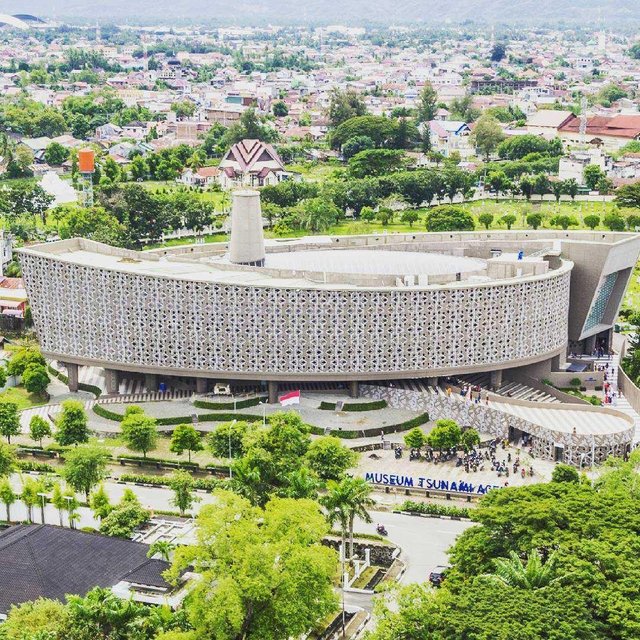Aceh Tsunami Museum
The Tsunami Museum is a museum where memories of the terrible events that have struck Aceh on December 26, 2004, which claimed as many as 240,000 lives. The museum is located on Jalan Sultan Iskandar Muda near Simpang Jam and opposite the Blang Padang Square in the city of Banda Aceh. The museum building is said to have been designed by an ITB Bandung architectural lecturer, M. Ridwan Kamil. The design, entitled Rumoh Aceh as Escape Hill, takes the basic idea of rumoh Aceh, namely the traditional house of the Acehnese people in the form of a house on stilts. The purpose of the construction of this museum is not only a monument building, but also as a historical object, where the building is the place for research centers and learning about the tsunami disaster as a symbol of the strength of the Acehnese community in the face of the tsunami disaster. In addition, this building is expected to be a legacy for future generations of Aceh as a message and lesson that the tsunami has once hit Aceh which has claimed many victims. The construction of this museum has spent a budget reaching 140 billion rupiah.
The museum building consists of 4 levels with decorations decorated with Islamic nuances. From the outside it can be seen that the building is shaped like a ship, with a flare standing upright on it. The extraordinary exterior appearance that expresses the diversity of Acehnese culture can be seen from the decorative ornament of the element of transparency of the outer shell elements of the building. This ornament symbolizes the saman dance as a reflection of Hablumminannas, the concept of inter-human relations in Islam.
On the ground floor of the museum there is open space that can be used as a public space. This floor is made elevated which aims as an escape hill, a hill-shaped park can be used as one of the anticipation of the rescue location in the event of a flood and tsunami disaster in the future. Each floor (measuring 25 meters x 20 meters) can accommodate thousands of residents in an emergency.
When entering this building, the first room that visitors will visit is a reflection room. In this room there is a narrow and dim alley while listening to the sound of running water and the sound of the call to prayer. On the left and right of the aisle wall there is flowing water which is likened to the roar of a tsunami that has happened in the past.
After passing through the reflection room, museum visitors will enter the memorial hill mirrored room equipped with a monitor that can be used to access information about the tsunami that struck Aceh on December 26, 2004.
After the memorial hill room, visitors will enter the Light of God room, which is a cylindrical well-shaped space that shines a dim yellow light. At the top of the room was an Arabic calligraphy in the form of ALLAH in a circle. On the walls of this room was written the names of the victims of the tsunami who were killed in the big event. Buildings that resemble towers contain religious values which are a reflection of Hablumminallah (ie the concept of human relations with God). This room is also an access to the second level of the tsunami museum building.
Whereas on the second floor is access to multimedia spaces such as audio and 4-dimensional space, tsunami exhibition room, pre-tsunami space, while tsunami, and post-tsunami.
On the 3rd floor of the Aceh Tsunami Museum, there are several facilities such as the geological room, library, musalla, and souvenirs. In the geological space, visitors can obtain information about disasters, how earthquakes and tsunamis occur, through an explanation of several displays and simulation tools contained in the room.
At the final level of the Aceh Tsunami Museum building, it functions as an escape building when a tsunami occurs again in the future 